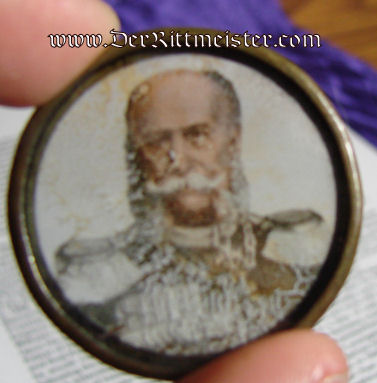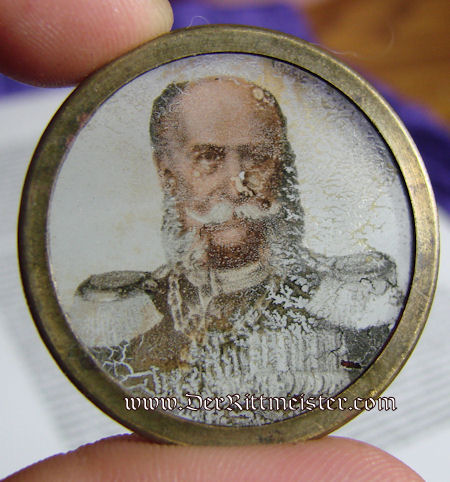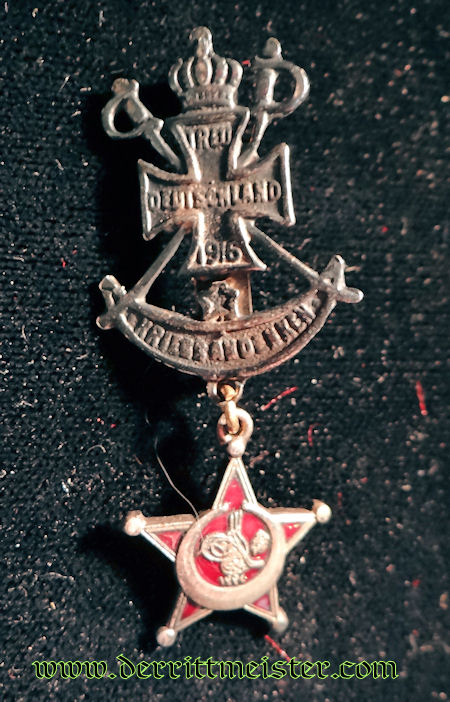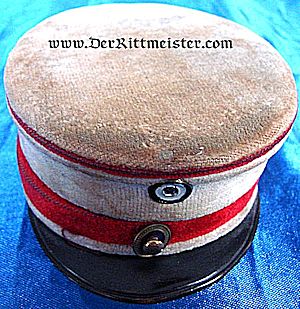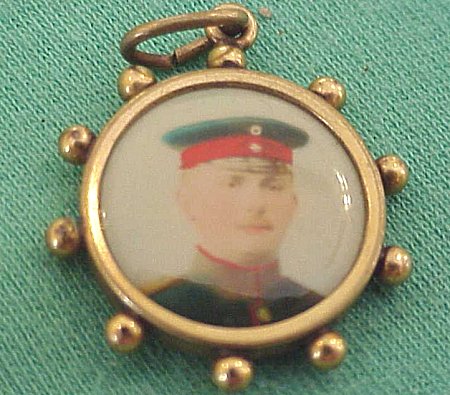Description
I have examined this item for several minutes trying to categorize it for you. The best that I have come up with it is that it is a patriotic display item commemorating Germany’s first Kaiser, Wilhelm I (1797-1888). In addition to being Kaiser, he was also Prussia’s King from 1861 until his death in 1888. He assumed Prussia’s throne in 1861 when his older brother König Friedrich Wilhelm IV (1795-1861) died. Wilhelm IV was paralyzed and mentally incapacitated by a stroke in 1857. In 1858 Wilhelm I assumed the position of Regent for his older brother and remained in this position until the King’s death in 1861. He continued his brother’s policy of German unification, which was largely completed with the conclusion of the 1866 Austro-Prussian War. Through all this and for the balance of his rule until his 1888 death, his closest advisor and political ally was none other than the “Iron Chancellor,” Otto von Bismarck (1815-1898). While Wilhelm I remained King of Prussia, the other German states deferred to Prussian rule. After the 1870-1871 Franco-Prussian War’s end, he was formally recognized as Emperor of Germany, as well as King of Prussia. Wilhelm I remained the political and moral head of Germany, and was much beloved by his people. Upon his death in March 1888, he was succeeded for ninety-nine days by his son, Germany’s second Kaiser, Friedrich III. Friedrich III was in ill health and died of cancer in June 1888. The third and final Kaiser of Germany, Friedrich III’s son and Wilhelm I’s grandson was Wilhelm II. He ruled Germany from June 1888 until November 1918. As a part of the German surrender following WW I’s end, Wilhelm II agreed to exile in the Netherlands. The House of Hohenzollern, which extended back to Frederick the Great’s time, no longer ruled Germany. Returning to our offering, we have a circular piece that measures 1 1/2″ in diameter. Its gold-toned frame might be brass, or some other non magnetic material. What I believe is a glass panel is inside the frame. A full color likeness of Kaiser Wilhelm I is painted on the panel. He is wearing a full dress uniform complete with a generalfeldmarschall’s epaulettes. On the uniform we see a large medal bar with numerous decorations. He is also wearing the Goldene Kette of the Order of the Black Eagle. The Kette was a large and elaborate collar or oversized neck device. It was made of gold and placed over his neck. It hung down making a very impressive device that was the ultimate expression of being a House of Hohenzollern Prince. Princes were invested with it, and it could only be worn by a born-of-the-blood Prince on state occasions. Certain decorations from the “Black Eagle” decoration family were awarded to very favored individuals at the pleasure of the House of Hohenzollern’s head member. The Black Eagle was proximately displayed on general officers’ headdresses and was a central theme of the headdresses of officers, NCO’s, and enlisted men from the various Garde-Regiments, General Staff, etc. Also on Wilhelm I’s neck in this presentation is the Orden Pour le Mérite. This patriotic item is two-sided so the image may be seen on both sides. The image is somewhat faded and less than what it looked like when it was created more than one-hundred-years ago. Scratches and discoloration of the glass itself are evident. The entire feel is that it shows honest age. I have not seen anything quite like this. Other than being a patriotic piece, I do not know how to explain it. One might also think of it as table medal, but even that is not a correct assessment.
German patriotic jewelry, rings, lockets, pendants, and necklaces are a very sentimental category. Each time we are fortunate to receive patriotic jewelry it always seems to come with its own personality. We imagine how this piece was worn by its owner to show their patriotism and support. If you have any questions regarding the German patriotic jewelry please contact us 727.233.6173 or email kgreenfield@derrittmeister.com. Der Rittmeister Militaria has been providing collectors with over 20 years of service and look forward to another 20 years of treasures.
